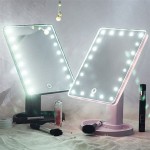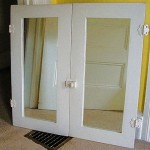Mirror For Desktop: Enhancing Productivity and Collaboration
Desktop mirroring, the ability to replicate the contents of a mobile device's screen onto a computer monitor, has evolved into a valuable tool for both individual users and businesses. It offers a range of benefits, from enhanced productivity and streamlined workflows to more engaging presentations and improved collaboration.
Several factors contribute to the increasing popularity of desktop mirroring. Larger screens provide a more comfortable viewing experience, particularly for detailed tasks like photo editing or document review. The use of a physical keyboard and mouse often enhances input speed and accuracy, further accelerating workflow efficiency.
Beyond individual use, desktop mirroring significantly improves collaboration. Sharing mobile content in meetings, presentations, or training sessions becomes effortless, fostering real-time interaction and discussion. The ability to display mobile applications, presentations, and other media on a larger screen facilitates clearer communication and understanding among participants.
A variety of methods exist for implementing desktop mirroring, each with its strengths and limitations. Wired connections, typically using USB cables, offer a reliable and stable connection with minimal latency. This method is particularly suitable for activities requiring precise timing and responsiveness, such as mobile gaming or using music production software.
Wireless mirroring provides greater flexibility and mobility. Technologies like Miracast and AirPlay allow for screen sharing without the constraints of physical cables. While generally offering good performance, wireless connections can be susceptible to interference and may experience slightly higher latency compared to wired alternatives. This can impact activities requiring precise timing.
Operating system compatibility plays a crucial role in the selection of a mirroring method. Certain technologies are platform-specific, such as AirPlay for Apple devices, while others offer broader cross-platform support. Users should consider their device ecosystem when choosing a mirroring solution to ensure seamless integration.
Software applications are central to the desktop mirroring process. Dedicated mirroring applications are available for various operating systems, providing features such as screen recording, adjustable resolution, and customized settings. Some operating systems also incorporate native mirroring capabilities, simplifying the process for users.
Choosing the right desktop mirroring solution depends on specific needs and use cases. Factors to consider include the type of content being mirrored, the required level of performance, and the existing hardware and software environment. For tasks demanding low latency and high reliability, wired connections are often preferred. When flexibility and mobility are paramount, wireless solutions provide a convenient alternative.
Beyond the technical aspects, desktop mirroring contributes significantly to enhancing productivity. The ability to access and utilize mobile applications on a larger screen reduces eye strain and improves multitasking capabilities. This is particularly beneficial for professionals who rely heavily on mobile devices for their work.
In educational settings, desktop mirroring facilitates interactive learning experiences. Teachers can share educational apps, presentations, and other interactive content with the entire class, promoting engagement and collaborative learning. Students can also share their work from their mobile devices with the class, fostering a more dynamic and interactive learning environment.
Within the business context, desktop mirroring streamlines presentations and meetings. Sharing mobile content on a larger screen eliminates the need for projectors or cumbersome cable connections, ensuring smooth and efficient communication. This allows presenters to focus on delivering their message rather than grappling with technical challenges.
Troubleshooting common issues associated with desktop mirroring can often be resolved through simple steps. Checking network connectivity for wireless mirroring, ensuring device compatibility, and verifying the correct configuration of mirroring software are often effective solutions. Consulting online resources and documentation can also provide valuable assistance in addressing more complex technical issues.
The future of desktop mirroring appears promising, with ongoing advancements in technology promising further enhancements. Improved wireless protocols are expected to reduce latency and improve connection stability, bridging the performance gap between wired and wireless solutions. Integration with emerging technologies, such as virtual and augmented reality, could unlock new possibilities for interactive experiences and collaborative applications.
Developments in software applications are anticipated to provide more comprehensive features and functionalities. This may include enhanced screen customization options, improved performance optimization, and integration with other productivity tools. These advancements will further solidify the role of desktop mirroring as an indispensable tool for individuals and businesses alike.

Led Makeup Mirror Desk With Lamp Usb Charging Round Fill Fruugo Fr

European Vintage Makeup Mirror Desktop Double Side Princess Cosmetic Rotating Home Decor Frame Table Vanity Mirrors Fruugo Fr

Desktop Makeup Mirror Led Fill Light Dressing Table Desk Beauty With Bulb Rechargeable Version

European Style Mirror Simple Vintage Makeup Hanging Bathroom Antique Gold Desktop Gifts For Women Fruugo Fr

Lightup Led Ring Light Desktop Makeup Mirror Magnitone London

Ucm07 Led Vanity Mirror 3 Light Colors Dimmer Memory Function Emke Emkedirect Co

Led Folding Makeup Mirror With 1x 10x Magnification Light Up Double Sided Desktop Cosmetic Usb Luminous Portable Storage For Table Fruugo Fr

16led Usb Battery Dual Use Makeup Mirror Light Desktop Temu

Desk Mirrors Target

Led Desktop Makeup Mirror 3 Colors Lighting Stand Temu








